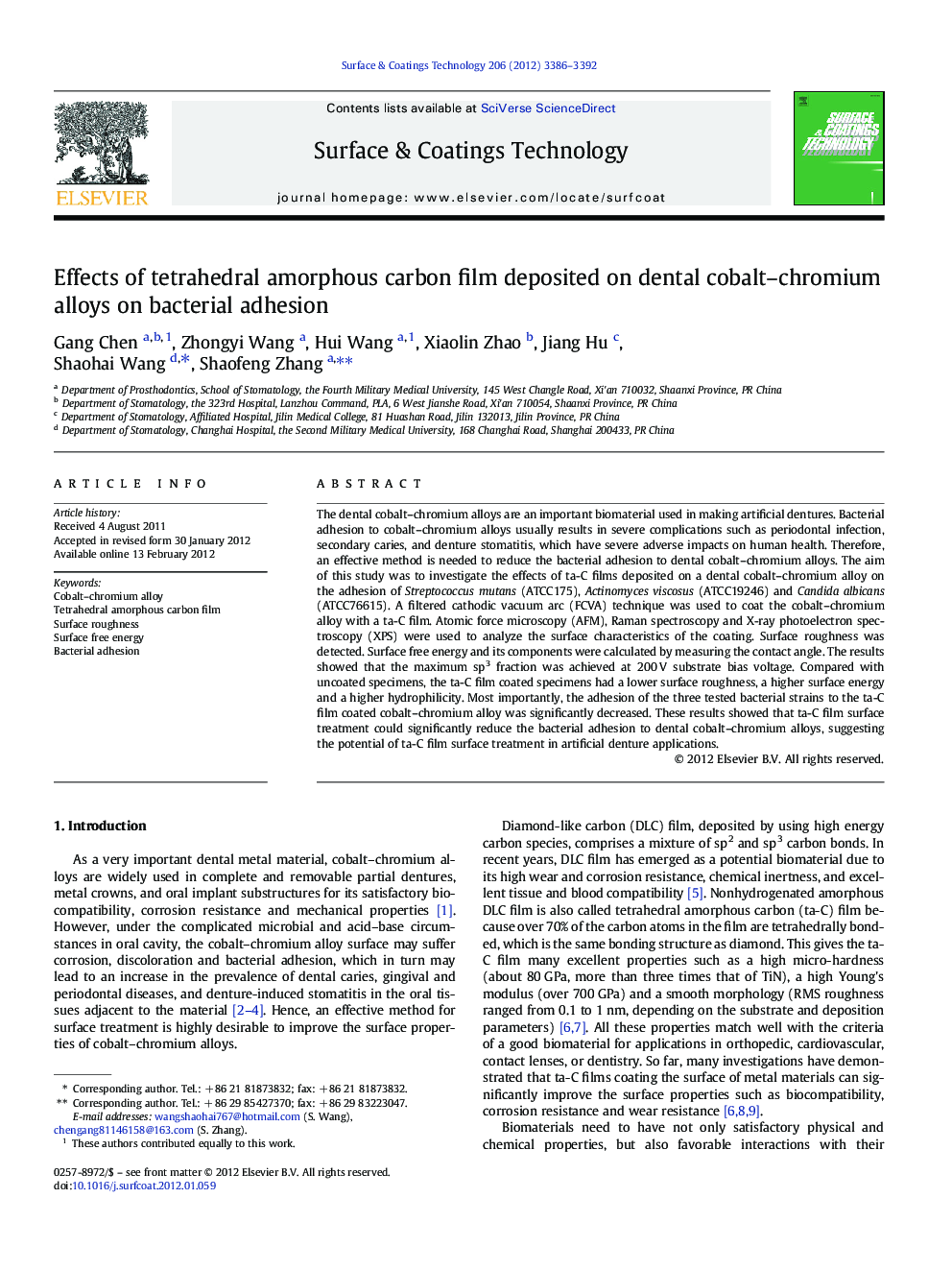| Article ID | Journal | Published Year | Pages | File Type |
|---|---|---|---|---|
| 1658370 | Surface and Coatings Technology | 2012 | 7 Pages |
The dental cobalt–chromium alloys are an important biomaterial used in making artificial dentures. Bacterial adhesion to cobalt–chromium alloys usually results in severe complications such as periodontal infection, secondary caries, and denture stomatitis, which have severe adverse impacts on human health. Therefore, an effective method is needed to reduce the bacterial adhesion to dental cobalt–chromium alloys. The aim of this study was to investigate the effects of ta-C films deposited on a dental cobalt–chromium alloy on the adhesion of Streptococcus mutans (ATCC175), Actinomyces viscosus (ATCC19246) and Candida albicans (ATCC76615). A filtered cathodic vacuum arc (FCVA) technique was used to coat the cobalt–chromium alloy with a ta-C film. Atomic force microscopy (AFM), Raman spectroscopy and X-ray photoelectron spectroscopy (XPS) were used to analyze the surface characteristics of the coating. Surface roughness was detected. Surface free energy and its components were calculated by measuring the contact angle. The results showed that the maximum sp3 fraction was achieved at 200 V substrate bias voltage. Compared with uncoated specimens, the ta-C film coated specimens had a lower surface roughness, a higher surface energy and a higher hydrophilicity. Most importantly, the adhesion of the three tested bacterial strains to the ta-C film coated cobalt–chromium alloy was significantly decreased. These results showed that ta-C film surface treatment could significantly reduce the bacterial adhesion to dental cobalt–chromium alloys, suggesting the potential of ta-C film surface treatment in artificial denture applications.
► Ta-C film was deposited on dental cobalt–chromium alloy by FCVA technique. ► Substrate bias voltage could affect the sp3 fraction of ta-C film. ► Ta-C film coated surfaces were much smoother than uncoated ones. ► Substrate bias voltage could significantly affect surface energy components. ► Ta-C film surface treatment could significantly reduce bacterial adhesion.
